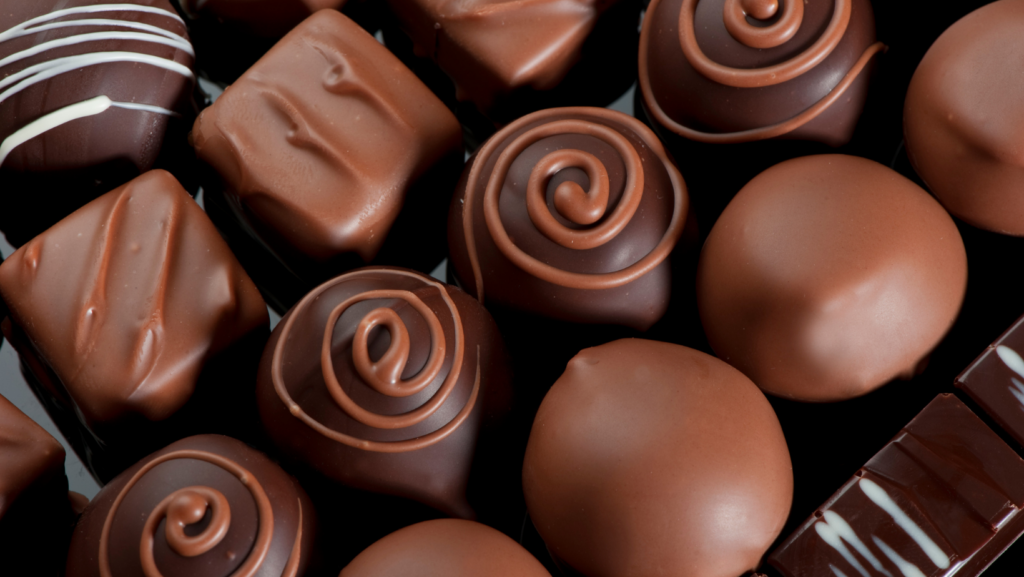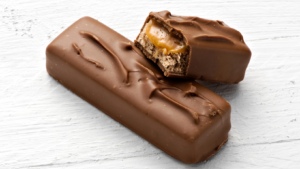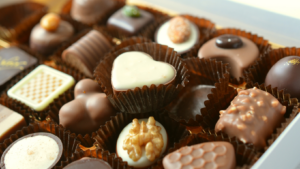
In the confectionery universe, candy and chocolate hold a special place. They’re not just treats, they’re experiences; tiny, delectable moments of joy. Whether you’re a casual sweet tooth or a confectionery connoisseur, the journey from cocoa bean to candy bar is a fascinating one.
The world of candy and chocolate is rich, not only in flavor but also in history and innovation. It’s a realm where science meets artistry, and the result is an endless array of delightful creations. This article will unwrap the sweet secrets behind your favorite treats, offering a taste of the magic that goes into every bite.
So, prepare to embark on a delicious exploration of candy and chocolate. You’ll discover how these sugary delights have evolved over time and how they continue to captivate taste buds across the globe.
Candy:hou_h2r89n4= Chocolate

Traversing the era of chocolate confectionery, an exquisite craft emerges: the art of artisanal chocolate. This section unfolds the journey of artisanal chocolate, from its origins to what differentiates it today.
The birth of artisanal chocolate traces a path back to the ancient civilizations of Mesoamerica, where Cacao played a pivotal social and religious role. With the European discovery of the Americas, Cacao, or “food of the gods”, as the Maya called it, embarked on a voyage across the ocean. A rich Orebro, Sweden, confectioner is attributed with pioneering the use of artisanal techniques in early 18th century. Utilizing freshly roasted cacao beans, he experimented with grinding and tempering methods that influenced the makes of modern artisanal chocolate.
What Sets Artisanal Chocolate Apart
Distinguishing artisanal chocolate is a nuanced endeavor, as it’s largely about sensory nuance: taste, texture and the emotional pleasure it imparts. Artisanal chocolates gently tease the palate with complex flavor profiles, exceptional ingredients, and artistic presentations. The attention lies in the fine detail, from the sourcing of high-quality, organic cacao beans to the intricate practices of small-batch roasting, grinding, and tempering. Moreover, it exudes a commitment towards sustainability and fair-trade practices, adding another layer of value.
Health Benefits of Chocolate

Beyond being a delectable delight, chocolate hosts numerous health benefits. This versatile candy, especially those of the dark variant, stands as a remarkable beacon in nutrition science.
Brimming with antioxidants, dark chocolate boasts health-boosting properties. Upon consumption, these antioxidants combat harmful free radicals in the body. The presence of flavonoids, a type of antioxidant found in cocoa, enhances chocolate’s power. For instance, a 100g bar of dark chocolate contains 53.5mg of flavonoids, significantly higher than other antioxidant-rich foods like blueberries and green tea.
Mood Enhancement Qualities
Chocolate doesn’t just tantalize the taste buds, it’s also a mood elevator. Packed within each delicious bite are Phenylethylamine (PEA) compounds. These chemicals stimulate the brain, causing it to release endorphins – the body’s natural feel-good hormones. Specifically, a standard 50g milk chocolate bar contains 6.7mg of PEA, predicated on its cocoa content. Hence, the appeal of chocolate transcends beyond its delectable taste, offering comfort in distressed times.
Chocolate in Global Cuisines

Incorporating the rich decadence of chocolate into diverse culinary styles, global cuisines continue to repurpose this versatile ingredient in imaginative ways. Let’s explore the significant roles chocolate plays in several European dishes and its predominant influence in American desserts.
Turn to any corner of Europe, and you’ll find chocolate making its mark on traditional and modern fare alike. In Italy, for instance, it’s common to find Tiramisu, a dessert layering espresso-dipped ladyfingers and a whipped mixture of eggs, sugar, and cocoa. Germany’s cherished Schwarzwalder Kirschtorte, known as Black Forest Gateau, seductively pairs dark chocolate cake with cherries and cream for an indulgence wrapped in rich complexity.
Moving beyond desserts, Belgium serves rabbit in prune and chocolate sauce, wherein dark chocolate enriches the savory sauce, highlighting the gamey flavors of the rabbit. In Spain, churros con chocolate, deep-fried doughnut-like pastries dusted with sugar and served with a thick hot chocolate for dipping, remain a breakfast favorite. Through these variations, it’s evident that chocolate holds a pivotal role in European gastronomy.
